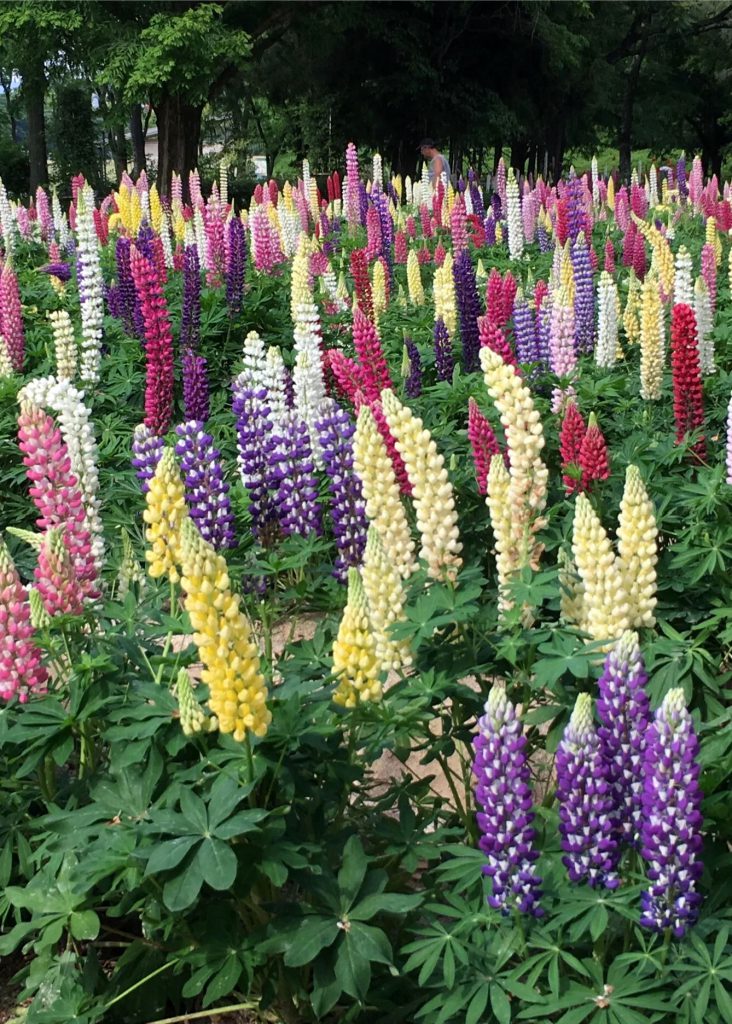
Lupines under cloudy weather stand and the ground is a blue sky. Lupine is a leguminous plant that originates in the Americas and the Mediterranean coast and has more than 200 species distributed in South Africa. It was cultivated in the country of origin for more than 3000 to 6000 years and was used for food and fertilizer, but it seems that it will be cultivated for ornamental use by the development of an improved variety by British gardener George Russell in 1911. It is a tall flower that grows straight, and its spikes look like wisteria flowers turned upside down. For this reason, Japanese names such as Nobori Fuji, Tachi Fuji, and Hauchiwamame, which are likened to wisteria flowers, are given. On the other hand, GlassGemCorn is a colorful corn created by breeding by Native American farmer Carl Burns, and its popularity has expanded at a stretch since it was posted on Facebook in 2012.
曇天下ルピナスが林立して地上は青天です。ルピナスは南北アメリカや地中海沿岸地方が原産国で、南アフリカ地方に200種以上が分布するマメ科の植物です。原産国では3000年~6000年以上にわたり栽培され、食品や肥料などに活用されていましたが、1911年にイギリスの園芸家ジョージ・ラッセルが改良品種を開発したことで観賞用として栽培されるようになりました。真っ直ぐに伸びた背の高い花で、その花穂はまるで藤の花が逆さになったような姿をしています。そのため、藤の花に例えた昇藤(ノボリフジ)、立ち藤(タチフジ)、羽団扇豆(ハウチワマメなどの和名がつけられています。一方、グラスジェムコーンはネイティブアメリカンの農家であるカール・バーンズさんが品種改良で生み出したカラフルなコーンで、2012年、Facebookに掲載をしてから一気に知名度が拡大しました。

